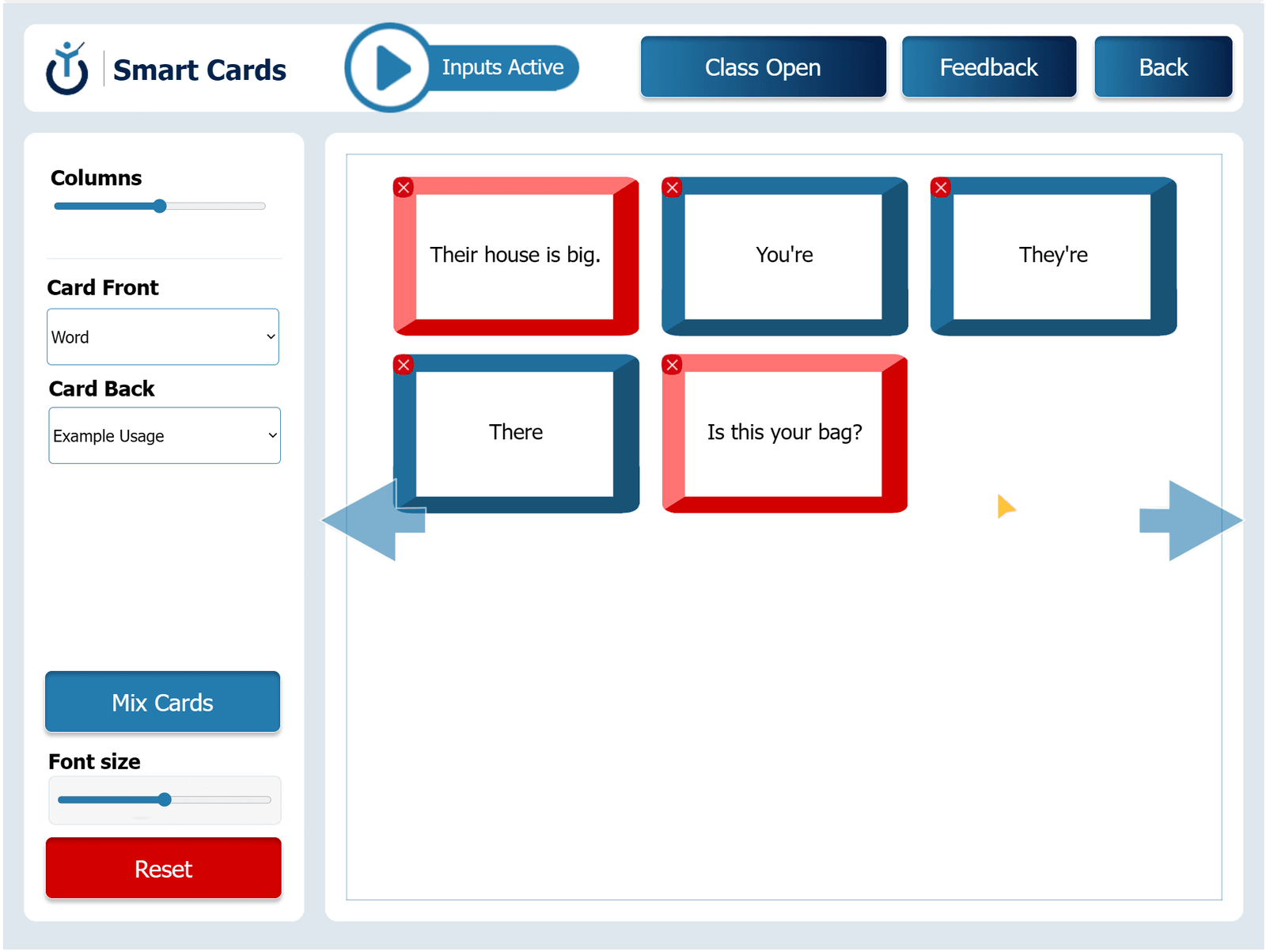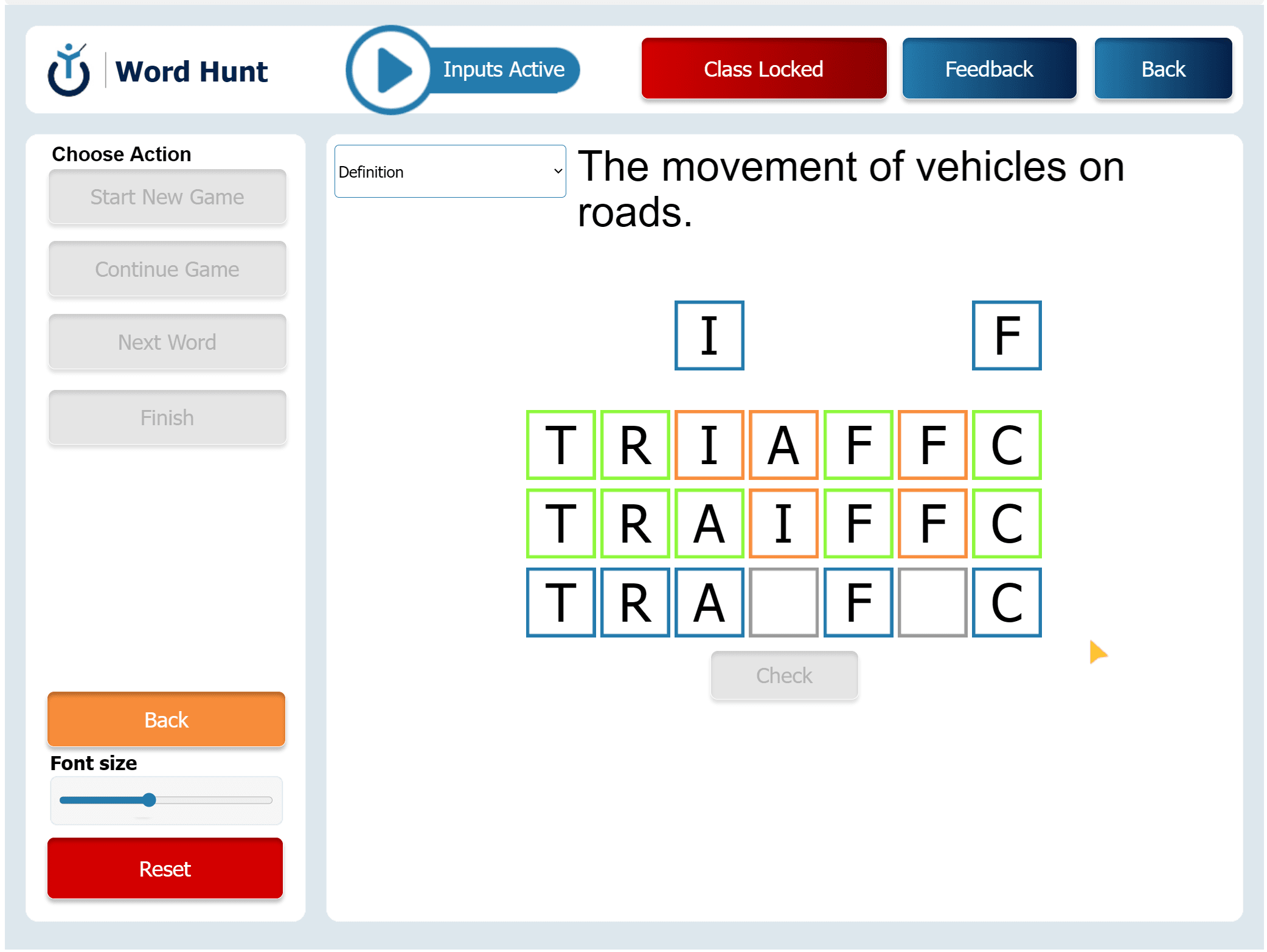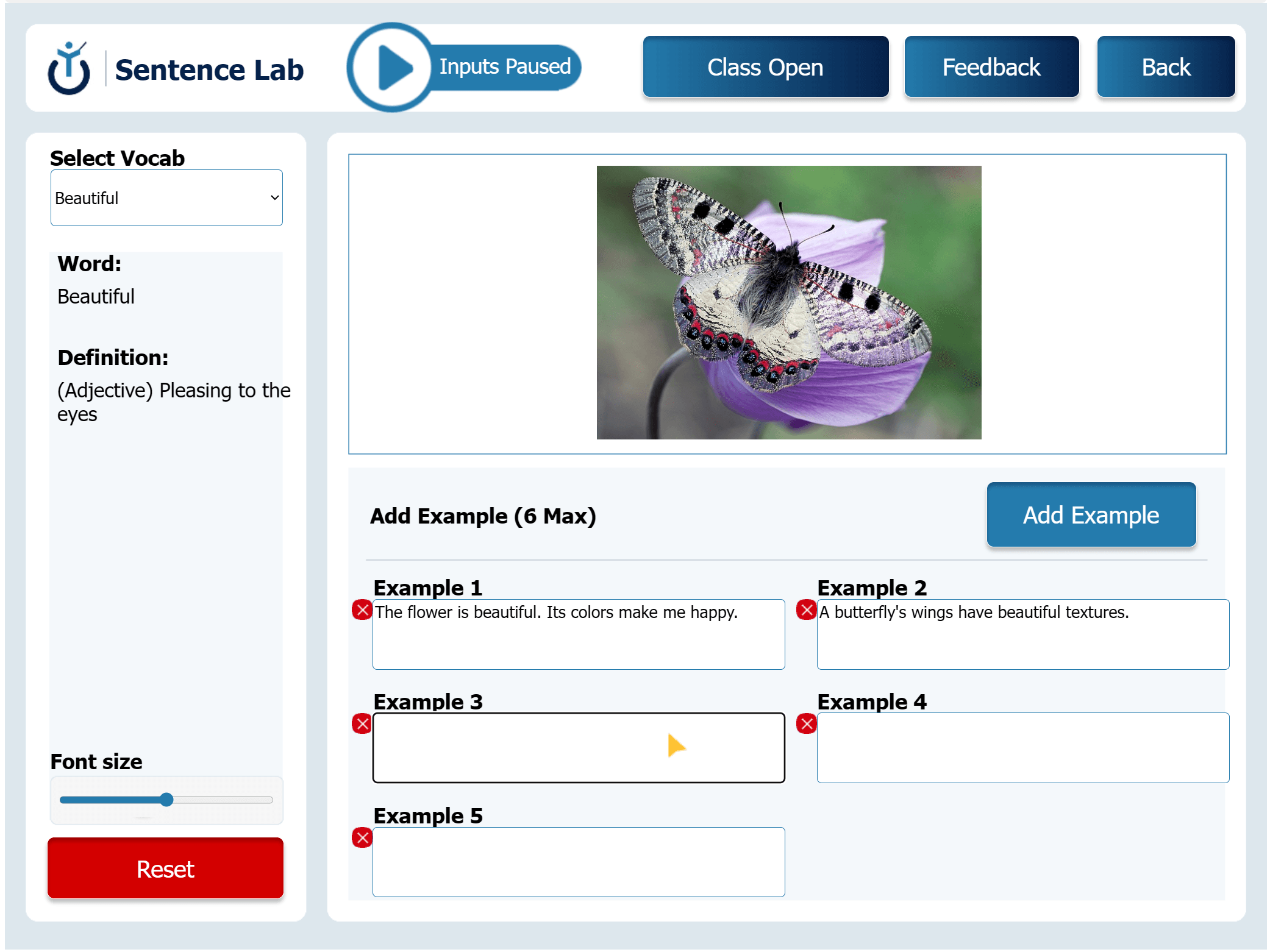In Smart Cards, students use digital flashcards to learn and review vocabulary. Each card shows useful information like the word, its meaning, example sentence, related words, and part of speech. Teachers and students can choose what is shown on each side of the card. This helps students understand each word more deeply and remember it better. Smart Cards makes vocabulary practice more fun and complete.
Synonym Match Up
Objective: Learn new words by finding synonyms and thinking about small differences in meaning.
Instructions: Choose “Word” for the front and “Definition” for the back of the cards. The teacher says a synonym of a word on one of the cards. Students try to flip the card that matches the synonym.
Follow-up: Students can think of a new word that matches the same meaning and let others guess which definition it belongs to.
Sentence Swap
Objective: Understand how words can change meaning in different sentences.
Instructions: Students pick a word and read its example sentence. Then they look at the other example sentences on the cards and see if their word can be used in those sentences too.
Follow-up: Students find pairs of sentences where two words can be swapped and still make sense.
Explain It to a Friend
Objective: Practice explaining vocabulary in simple words.
Instructions: Students choose a card and imagine explaining the word to a friend who doesn’t know it. They use the meaning, example, and other details on the card to make a short, simple explanation.
Follow-up: The teacher asks a few students to share their explanations. The class can decide on a fun or easy new way to define the word together.
Create a Scenario
Objective: Use vocabulary in real-life or made-up situations.
Instructions: The teacher picks a word in secret and describes a short situation where that word fits. For example, if the word is “reluctant,” the teacher might say, “Someone is afraid to try a new food.” Students guess the word by turning over the correct card.
Follow-up: Students make up their own situations for other words and explain how they would use the word in that case.
Part of Speech in Action
Objective: Understand how words change based on their grammar role.
Instructions: The teacher says a sentence with a vocabulary word in it. Students listen and guess if the word is a noun, verb, adjective, or something else.
Follow-up: Show cards with the word on the front and part of speech on the back. Students try to use the word in a sentence where it matches that part of speech.







